Table of Contents
Introduction
In stage of the nature, insect mimicry is one of the most splendid works of evolution that reveals the most admirable strategies for survival ever created.
Imitation in insects is a diversified complex of adaptive features of behavior and appearance aimed at manipulation or misrepresentation of the predator or the prey.
This fascinating process not only exemplifies such creativity of evolution’s processes as concepting and partnering but also seeks to call attention to the complex dynamics of maintaining the structure of ecosystems.
This article will explain about the various kinds of mimicry, its types, and discusses how insects have evolved to achieve such a feat.
What is Insect Mimicry?
Mimicry in insects entails those characteristics of insects that make them look like, or sound like, or even behave like some other organisms.
However, this adaptation may provide for many survival advantages such as escaping predator’s clutches, confusing prey or to reach desirable resources.
Mimicry can be broadly categorized into several types
Batesian Mimicry
Batesian mimicry was named after the naturalist Henry Walter Bates, here, a harmless insect will mimic the appearance of a toxic or noxious one.
The main advantage of this mimicry is to trick potential predators into thinking, the mimic is dangerous or not tasty, so they stay away.
This kind of imitation is particularly suitable when the adverse model is recognized among the predators.
Example: The Viceroy Butterfly
An instance of Batesian mimicry is the viceroy butterfly (Limenitis archippus).
Actually, it looks very much like the Monarch butterfly which is toxic due to feeding on toxic milkweed as a larva.
Monarchs are bitter tasting to those that have a chance to taste them, and due to this fact, birds that have tasted them reject any other butterfly that resembles monarchs hence bringing a semblance of safety to the viceroy which is not poisonous but is a relative of the monarchs.
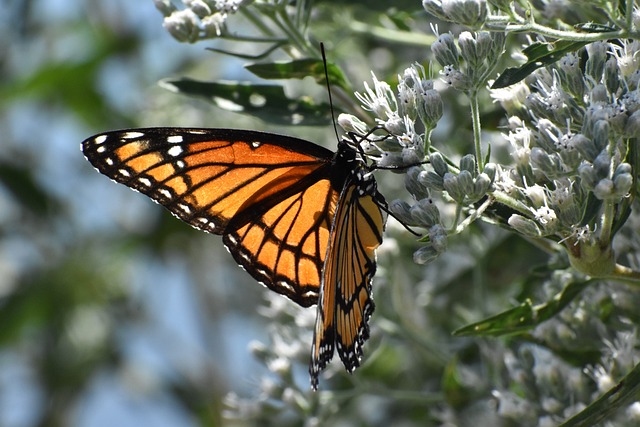
Mullerian Mimicry
Mullerian mimicry differs from Batesian mimicry because several toxic or noxious species get benefitted and coevolve to mimic each other’s appearance.
This kind of mimicry is thus reciprocal in its gains since it strengthens the avoidance mechanism from predators.
When a population of predators in a food chain learns to avoid one toxic species they are likely to also avoid other toxic species.
Example: Bees and Wasps
Mullerian mimicry is shown by bees and wasps: Different species of them.
These insects are usually brown or black and yellow, a blend that informs other that they are capable of stinging.
Thus, all these species, owing to their progressive similar warning colourations, increase the efficiency of the defence system in its totality.
Any predator that has come across one of these species and received a painful sting, will stay clear of all similar colored species.
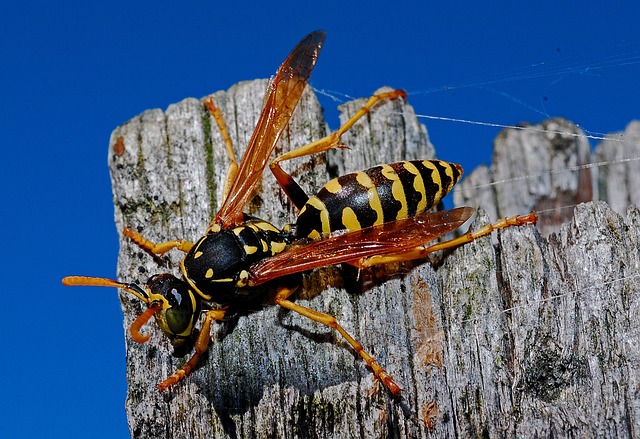
Aggressive Mimicry
It has been involved when the predator or the parasite effectively copy harmless or even beneficial species with an intention to deceive a prey or the host.
Such mimicry helps the predator to reach the target, as the latter would not harm the imitating object in any way.
Example: The Antlion Larva
For true example of aggressive mimicry we should look to the antlion (family Myrmeleontidae).
This is achieved by the larva assuming the characteristics of the preferred prey hence the ant-like appearance of the predator.
It dig its hole in the sand and camouflages with its brown colour making it resemble a small anthill.
When ants approach then they become captured by the antlion since they fall into the hole that the antlion digs.
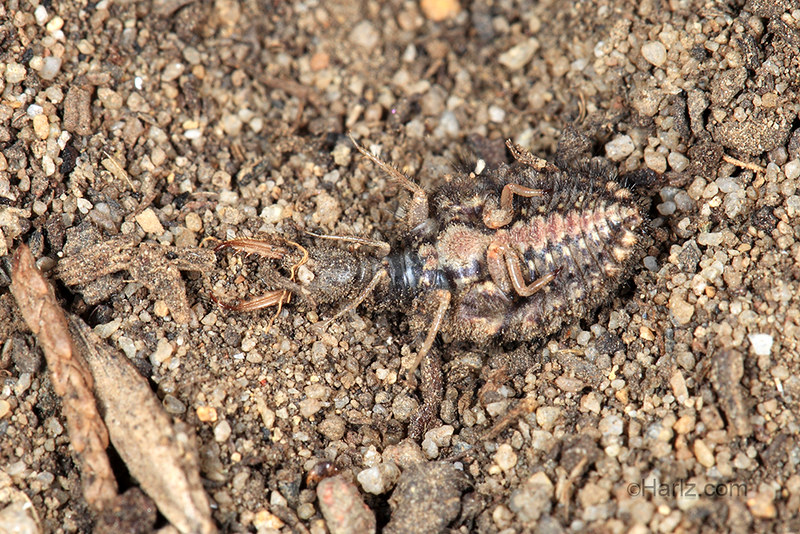
Automimicry
Automimicry also referred as intraspecific mimicry is the mimic occurrence of part of the body of an insect by the same insect.
This form of mimicry can be useful in many purposes like disguising itself from a predator or even a rival.
Example: The Owl Butterfly
The species of butterfly that can be seen to demonstrate automimicry is the owl butterfly (Caligo memnon), as its wing’s patterns look like those of an owl’s eyes.
This useful pattern is used as protection where the owl butterfly, with its vivid appearance and large eyes, scares off some potential foe with the shadow of a more powerful animal.
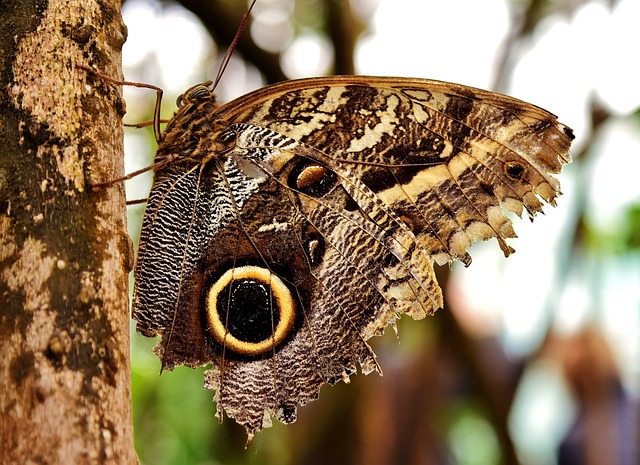
Notable examples of Insect Mimicry
Insect mimicry comes in many beautiful ways, and every single one of them is, understandably, a necessity that is pivotal to the insect’s survival. Let’s explore some notable examples of insect mimicry
Praying Mantises
This is especially the case because praying mantises are probably the most famous insects for their imitating abilities.
Some are mimics of the flowers in order to trap the unsuspecting pollinators into their deadly trap.
Example: The Orchid Mantis
The orchid mantis is one of the most vivid examples of flora replication; (Hymenopus coronatus).
Its body and legs have that orchid look to it, complete with patterns and color that resembles the flower.
This resemblance brings pollinators such as bees and butterflies near the mantis where once they come near the insect, they are trapped and eaten.
Thus, looking at the case of the orchid mantis one can appreciate the effectiveness of the camouflage system.

Stick Insects
Phasmids better referred to as stick insects are arthropods recognised for their innate ability to camouflage.
Most of them look just like sticks and leaves, blending perfectly with their surroundings.
Example: The Walking Stick Insect
An excellent example in this case is the walking stick insect (Carausius morosus).
Its body and legs are long like stick (the mimicry form) and color resembles a stick well enabling it to dwell with vegetation most of the time.
This allows the stick insect to blend with the foliage and this makes it hard for predators to recognize it.
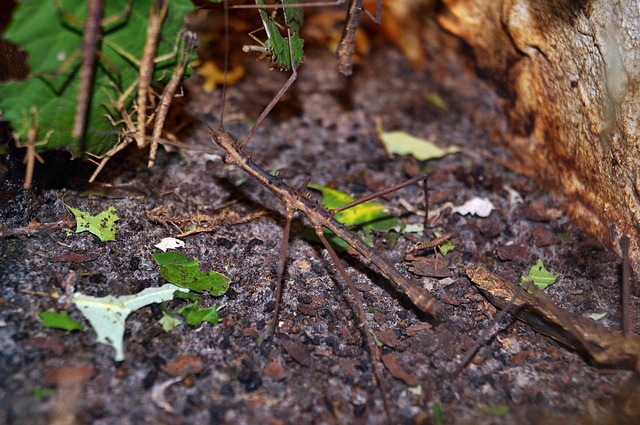
Leaf-Tailed Geckos
Even though the leaf-tailed geckos do not belong to the insect order they can by considered as a perfect example of mimics which are alike some insects in some ways.
The tails look like the withered leaves, and thus do not attract the attention of a predator by moving around the forest.
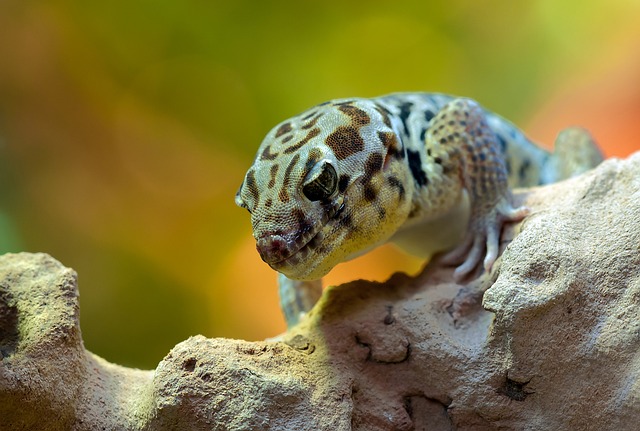
Example: The Satanic leaf tailed gecko
Satanic leaf-tailed gecko (Uroplatus phantasticus) has a beautiful tail which resembles a withered leaf.
This adaptation also aids the gecko in camouflaging when it ends up on the forest floor covered by a layer of leaves.
In case of danger the gecko can also move in a way so as to make his tail to be ahead of the rest of his body, and swaying from side to side making it look like a moving leaf.
Butterflies
Of all the mechanisms of mimicry in the insect world, butterflies are definitely the most famous.
Some of the of butterfly species utilize mimicry in an effort to successfully avoid predators or even to attract mate.
Example: The Leaf-Wing Butterflies
Leaf-wing butterflies that belong to the genus Kallima are famous for the resemblance of their wings to the foliage.
Their wings have color of the ground like the withered leaves on the floor of the forests.
This camouflage helps them avoid predators, for instance the butterflies blend with the leaves and one cannot see them since the view is obscured by falling leaves.

Science Behind Insect Mimicry.
Mimicry in insects often stems from the natural selection processes since any characteristic that would boost the chances of an organism’s survival would be selected for.
The process entails comprehensive interactions of the visual, chemical, and behavioral signals. Here’s a closer look at the science behind mimicry:
Evolutionary Pressures
Imitation is one of the survival strategies that builds from the process of natural selection where the individuals possessing certain characteristics that enhance their survival capacity are likely to reproduce and hence pass these characteristics to the next generations.
For instance, in Batesian mimicry the individuals of a certain species are less likely to be predated by predators because they resemble the features of other, more deadly species, thus means survival rate improves.
Visual Cues
It’s significant to start the discussion with the fact that there are several types of mimicry and perhaps the most evident one is the visual mimicry.
Some insects adapt to blending with other organisms or objects by changing its pigmentation, markings, as well as form.
Some of these appearances can assist the insects to hide from their predators or outlook like other members of different species.
Chemical Cues
There are some insects that employ chemical replica in order to increase their chances of survival.
For instance, some insects may synthesize substances which aromatise as other dangerous insects or spread pheromones which copy signals of other organisms.
This can give a competitive advantage in terms of survival because the one mimicking the chemical signals of the other is either escaping from predators, or is predating on weaker organisms.
Behavioral Cues
Mimicry is of two types, one is morphological mimicry in which an organism looks like another organism and second is the behavioral mimicry where an organism lives like another organism.
For instance, certain insects can make jerky movements or produce noises to the same effect as other organisms it is trying to avoid or hunting.
Such mimicry can be as efficient in misleading predators or prey, as those in which one of the species is identical to another one.
The Role of Insect Mimicry in Ecosystems
Generally, many insects acquire other insects’ appearance for the specific purpose of regulating certain ecological systems.
Thus, it can be concluded that: Mimics hinder the tangled interactions within their environments by fooling predators and prey.
Copycatting also takes a toll on the lifestyle of those at the other end of the food chain since predators are also known to be coerced to identify certain appearances as being dangerous or even repellent.
Predator-Prey Interactions
Insect mimicry thus interferes with the relations between animals that prey and food items they feed on in the ecosystem.
The predators that come across the mimics and avoid them will in one way or the other alter the behavior of the other predators in a given ecosystem.
This dynamic interaction assists in stability of the ecosystem because it results to none of the species exerting a lot of influence over the others.
Ecosystem Health
Mimicry also plays an important role in the stabilization of ecosystems due to the support for the protection of species that are endangered.
Hence, through changing one or another mimicry pattern, insects contribute to the existence of various types of species and their relationships in ecosystems.
Such a variety is beneficial to ecosystems’ stability and sustainability.
Future of Insect Mimicry Research
Further studies in the area of mimicry in insects are now giving even deeper ideas as regards the lessons of evolution.
Better technology and improved methods like molecular genetics and high resolution imaging are helping in the way mimicking evolves and how it works.
Conservation Implications
Knowledge about the mimicry of insects is relevant from the perspective of reserve protection.
A lot of species that employ the use of mimicry are endangered by loss of habitat and changes in the environment.
While learning about these species and the techniques they use in mimicry, it becomes possible for researchers to formulate proper steps that will help in preserving them and the places they live in.
Applications in Biomimicry
Reflection on nature as the source of inspiration is also helping to develop new principles of mimicking and create new technologies.
Biomimicry namely; the mimicking of biological systems to solve human problems, involves strategies like those by insects.
For instance, current investigations are being done to outline how mimicry can be applicable to creation coming up with new materials, camera concealment devices and robotics.
Conclusion
Insect mimicry is striking example of how the living nature spared no efforts to create true masterpieces.
These include the ability to blend with their surroundings such as the case of the orchid mantis and the stick insect that looks like twigs.
As a result, the awareness of the various types of mimicry and the procedures through which they occur helps in comprehending the specific characteristics of evolutionary progression and the balance of species interactions.
For a more detailed overview and concise notes on Ecology, including key concepts point wise to increase your understanding check out our digital product here. Our short notes for class 11 and 12 are designed to help you excel in your biology studies and ace your exams.
FAQ
What is insect mimicry and why is it important?
Insect mimicry involves insects resembling other organisms in appearance, behavior, or sound to gain survival advantages, such as avoiding predators or capturing prey.
What are the different types of insect mimicry?
There are several types, including Batesian mimicry (harmless insects mimicking harmful ones), Mullerian mimicry (harmful species mimicking each other), aggressive mimicry (predators mimicking harmless species), and automimicry (an insect mimicking parts of its own body).
Can you give an example of Batesian mimicry?
The viceroy butterfly is a classic example. It looks like the toxic Monarch butterfly, which helps it avoid predators that have learned to avoid Monarchs.
How does Mullerian mimicry benefit insects?
In Mullerian mimicry, multiple harmful species evolve to look similar, reinforcing the avoidance behavior in predators, which benefits all species involved by reducing the likelihood of being eaten.
Why is insect mimicry important for ecosystem health?
Mimicry helps maintain ecological balance by influencing predator-prey interactions and supporting the stability and diversity of ecosystems. It also provides insights for conservation and technological innovations through biomimicry.